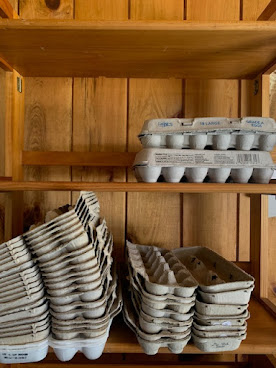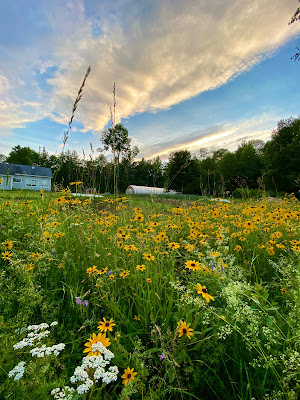Meet the Animals!
While some of you have visited the farm before, others have never gotten to meet our lovely animals! Here at CCF we have several different species of animals. We have various breeds of hens, meat bird chickens, turkeys, and swine. This post is meant to be informational and comprehensive in detailing the specific varieties of animals we choose to raise on our farm, how these animals fit into our farm environment, and how each animal species provides for our farm customers.
Poultry
At CCF we order one batch of these birds per year during the late summer and we keep them for two years. We typically purchase 45 - 50 birds per batch. With two batches of birds on the farm at a time (year old and two year old layers), on a daily basis, our birds typically lay somewhere between 55 - 70 eggs.
Barred Rocks
Purpose: Tasty brown eggs and their meat has delicious flavor.
Physical description: Plump hens with a red gobble and comb.
Color: Yellow skin with black and white speckled feathers.
Number of eggs per year: 220-280 eggs per year.
Fun facts: Barred hens belong to the “Plymouth Rock” family of hens.
Number of Barred Rock hens on the farm: 25
Source: https://www.mcmurrayhatchery.com/barred_rocks.html
 |
| Barred Rock Hen |
Leghorns
Purpose: Laying large white eggs!
Physical description: White birds with thin necks and a red gobble and comb.
Color: White
Number of eggs per year: 280-320 eggs per year
Fun facts: Leghorns have an impressive ‘feed to egg’ ratio, meaning that they are very cost effective birds to invest in.
Number of Leghorn hens on the farm: 22
Source: https://www.mcmurrayhatchery.com/pearl_white_leghorn.html
Leghorns Rhode Island Reds
Purpose: Renowned brown eggs and tasty meat too!
Physical description: Rusty red chicks that become dark reddish brown birds.
Color: Red.
Number of eggs per year: 200-300 eggs per year.
Fun facts: First bred in Rhode Island in the 20th century.
Number of Barred Rock hens on the farm: 10
Source: https://www.mcmurrayhatchery.com/rhode_island_reds.html
Rhode Island Reds
Meat Bird Chickens
Cornish Cross Meat Bird Chicken
Purpose: Producing meat for grocery stores, farms (like CCF) and other meat distribution outlets.
Physical description: Fat, white birds with red combs and red gobbles.
Color: White
Longevity/market weight: approximately 9 weeks on the farm and 6-8 pounds dressed.
Fun facts: They cannot fly, meaning that they are easy to wrangle and corral with low fencing.
Number of Cornish Cross Meat Birds on the farm: 41
Source: https://www.purelypoultry.com/cornish-cross-broiler-p-207.html
Day old meat bird chicks after arrival on farm- Large Broad Breasted White Turkeys
Purpose: Lean meat.
Physical description: Pearly white birds with red combs and gobbles.
Color: White
Longevity/market weight: 14-40 lbs. depending on sex of bird
Fun facts: The baby Large Broad turkeys are typically yellow in color. The turkeys are very curious and have fun personalities.
Number of Large Broad Breasted White Turkeys on the farm: 7
We receive our turkeys each season by mail order and will raise them for approximately 5 months. They typically dress out around 20 pounds.
Source: https://www.purelypoultry.com/broad-breasted-white-turkey-poults-p-462.html
 |
| Broad Breasted White Turkey |
 |
| Turkeys! |
Swine
At CCF we purchase our piglets in April. We typically raise 10 pigs per season and will have them for 5 months before sending them to market in the fall. We always have two processing dates for our pigs. The first batch of pigs are usually processed mid September while the second batch is processed later in the month. Each spring we try to source piglets as locally as possible, but acquiring good piglets can sometimes be tricky. With high demand and few farms that raise pigs to breed, the piglet market is often competitive. The past few years most of our piglets have come from farms out of Vermont.
Berkshire/Duroc cross piglets
Purpose: Provide large quantities of fresh pork to our consumers. All the pig manure is composted and used for our organic growing production
Physical description: Large, fast growing, and efficient.
Color: Multi-colored
Longevity/market weight: Can get up to 600 lbs. (ours are closer to 230 lbs. at market weight)
Fun facts: Pigs are known to be the smartest animal on any farm
Number of Berkshire/Duroc Cross piglets on the farm:10
 |
| 2021 Pigs in a pile |
 |





Comments
Post a Comment